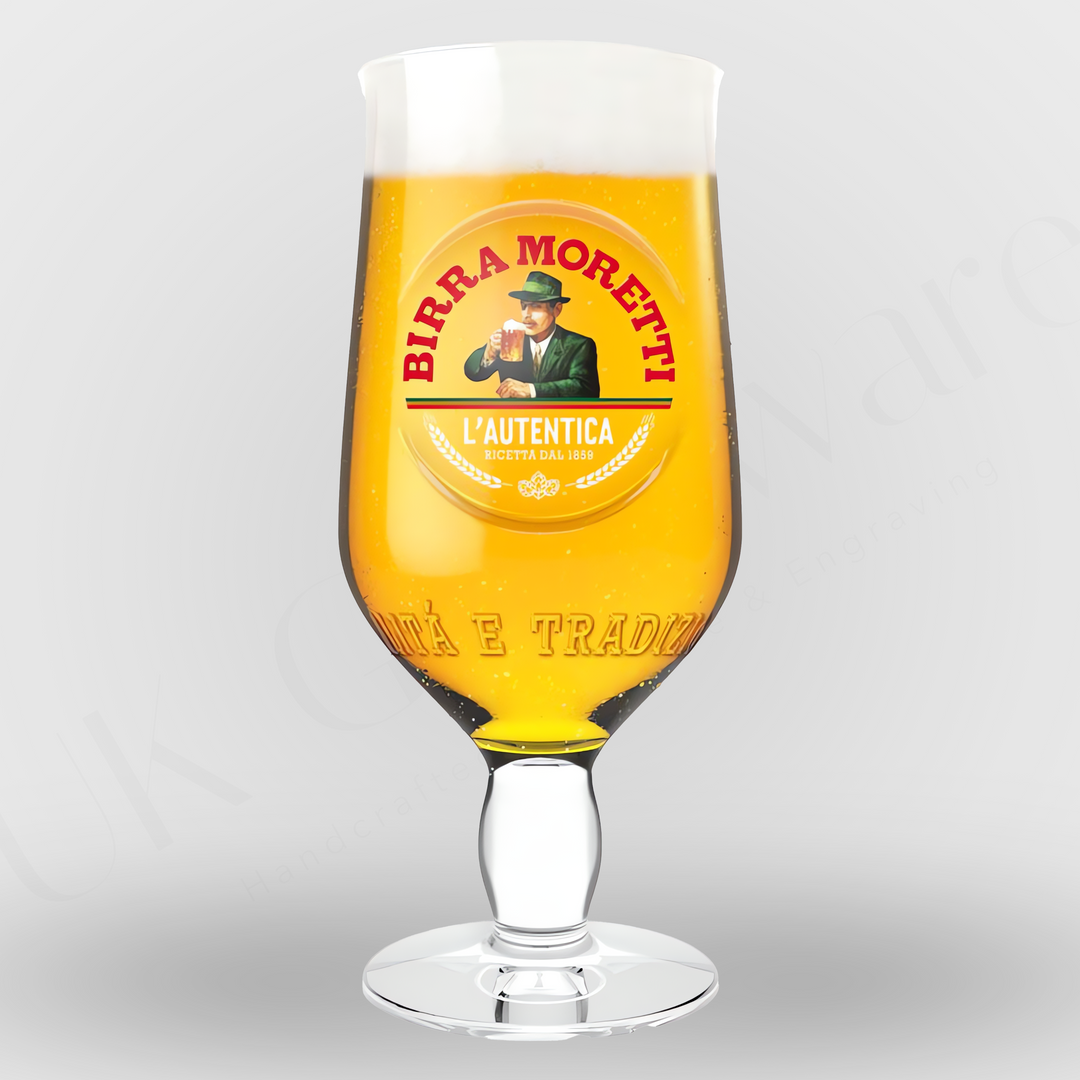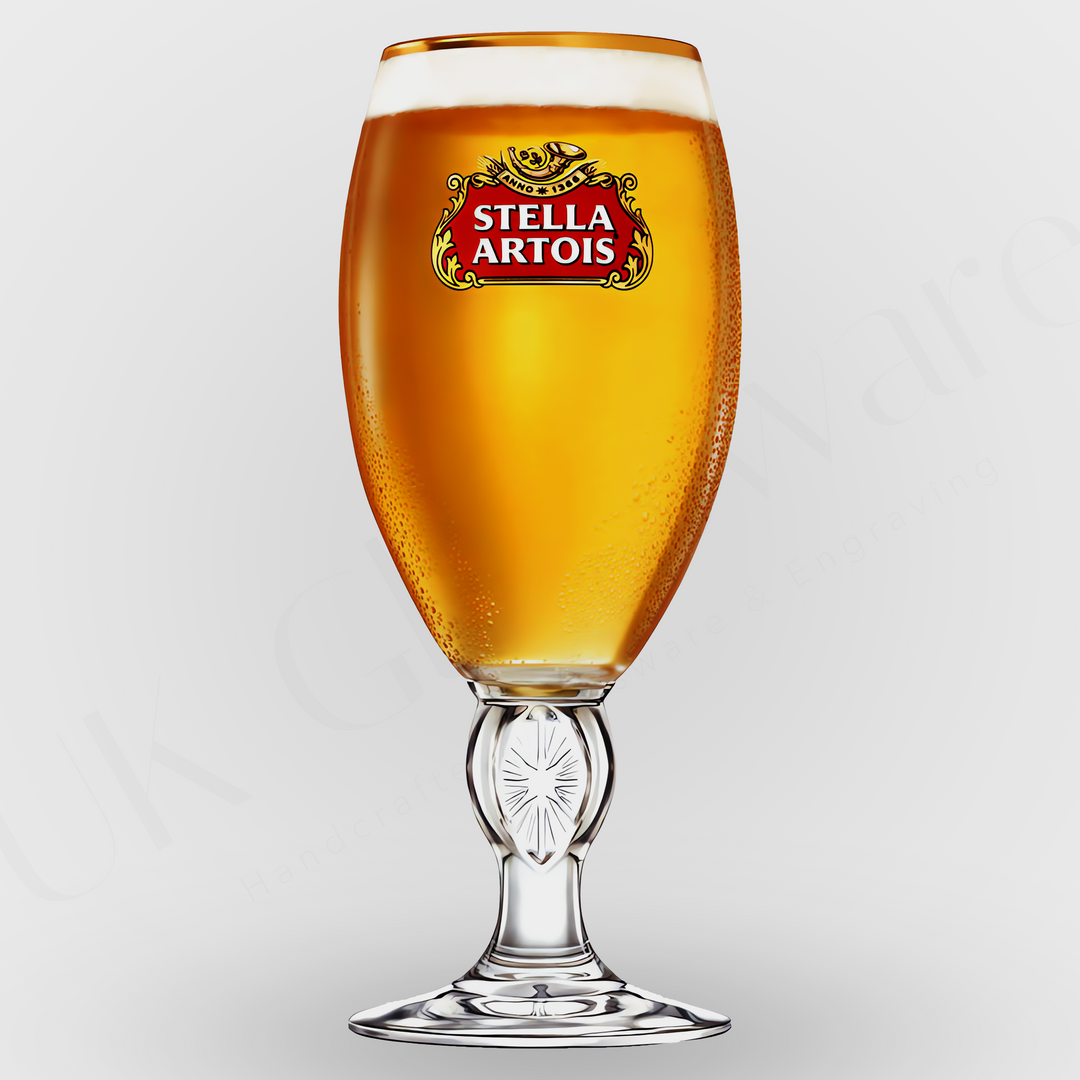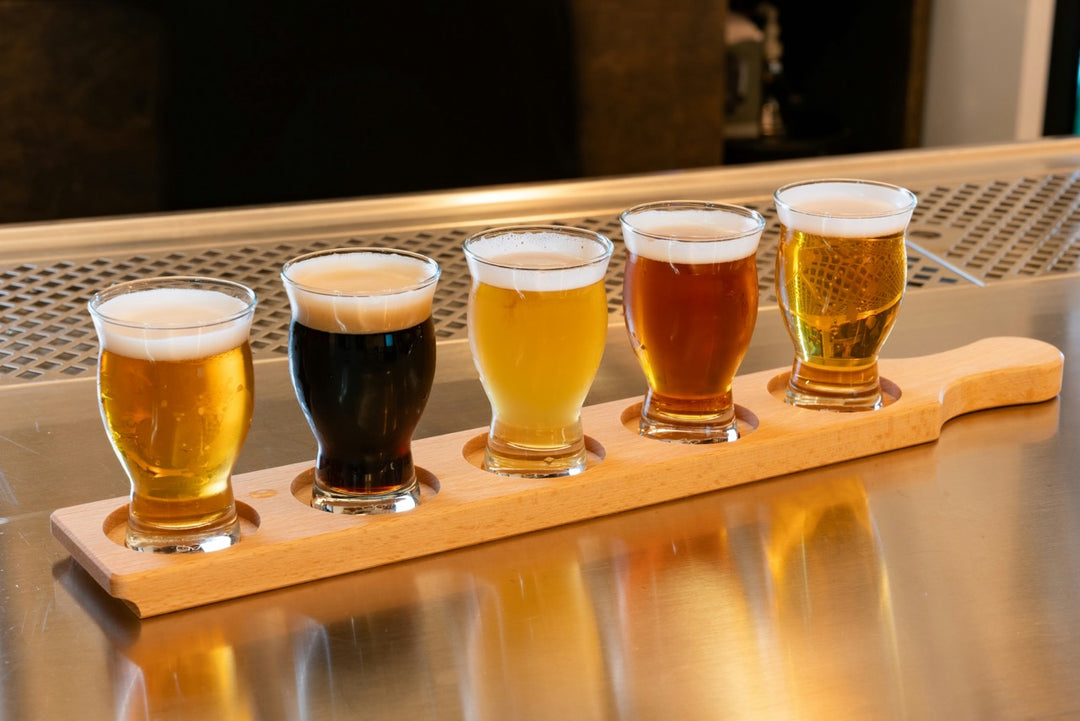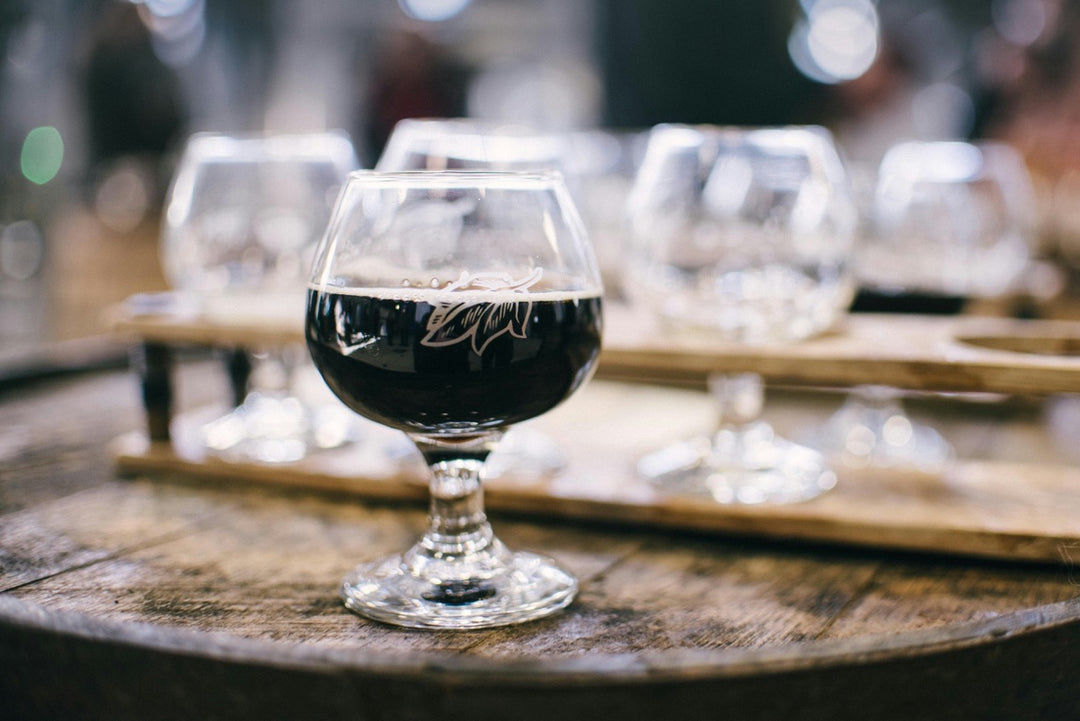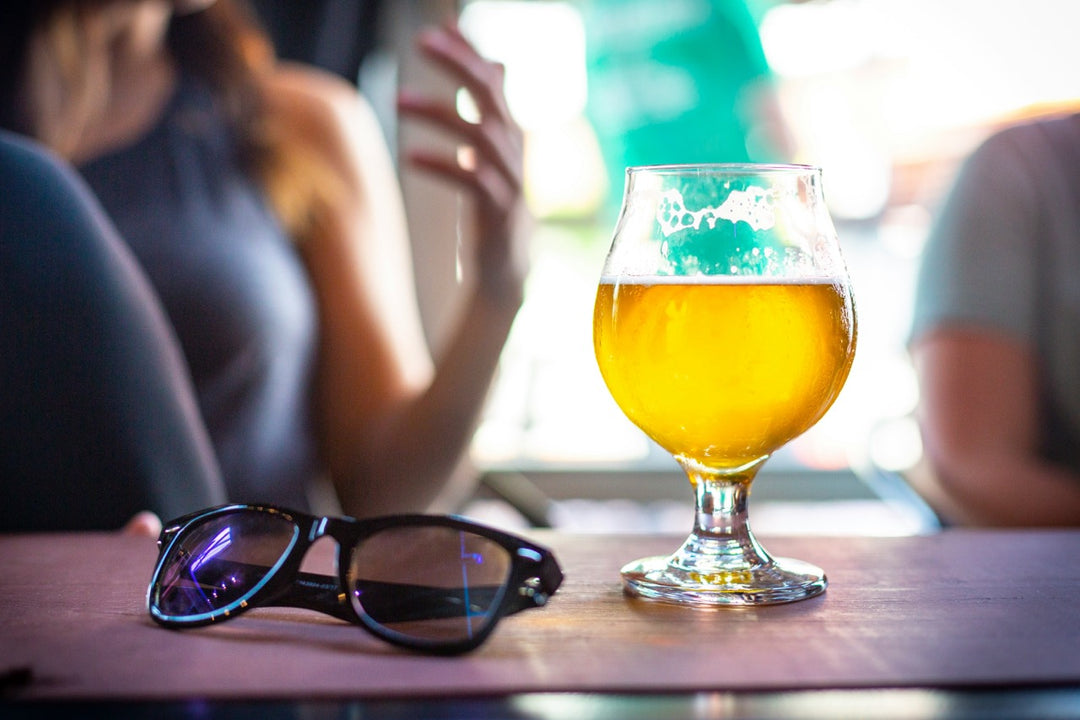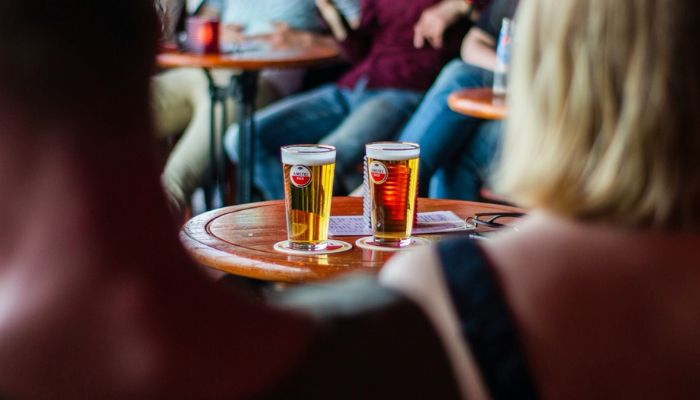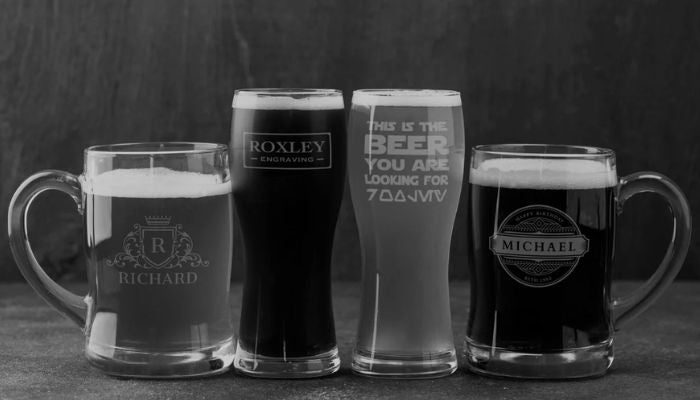The Ultimate Guide to Beer Glasses
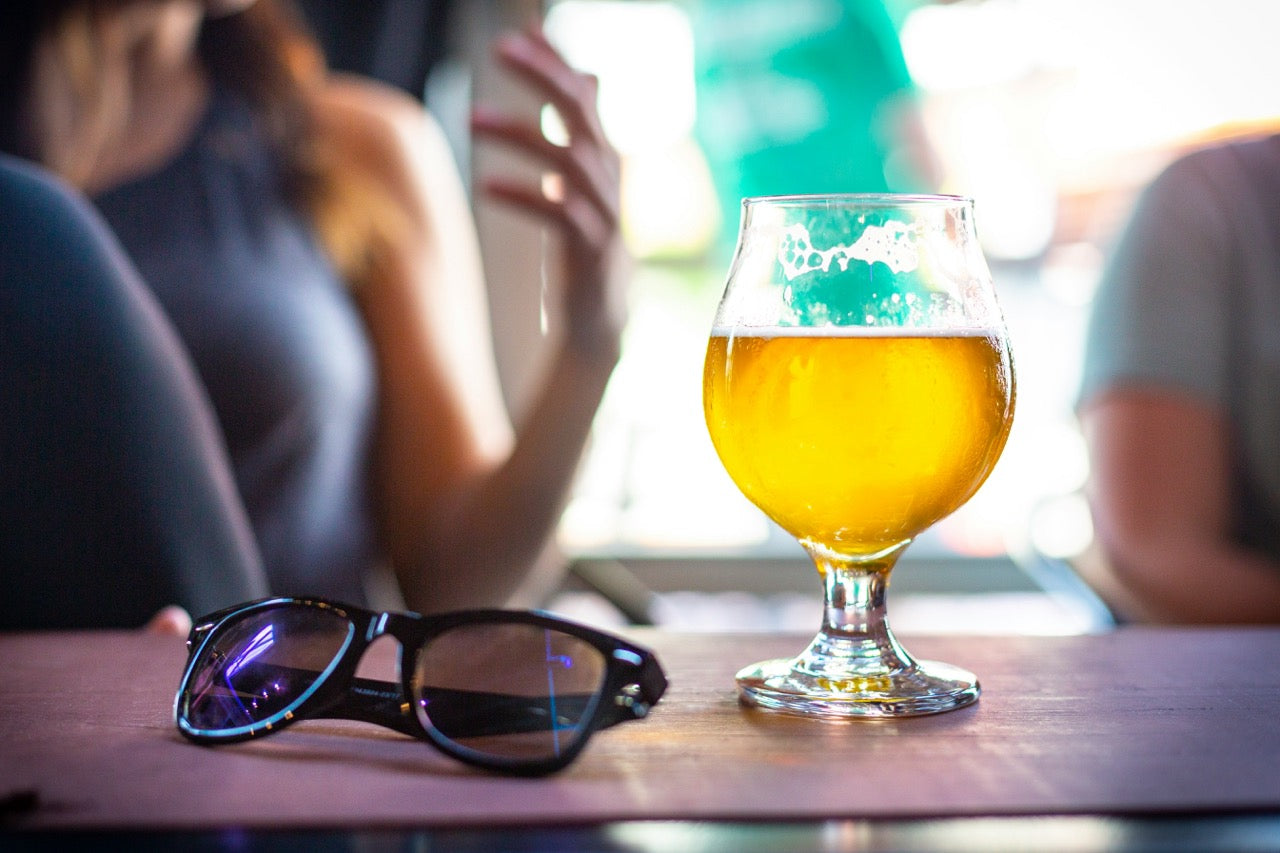
Beer enthusiasts often overlook how their glass choice impacts their drinking experience. The right vessel can boost flavours and aromas while the wrong one can make your favourite brew taste unsettling. There’s a reason we all hate plastic cups!
A suitable glass does more than hold your beer. It can enhance subtle notes, keep the ideal temperature, and influence how the carbonation interacts with your taste buds. Below are the most common glass types and their effects on various beers.
Pint Glasses
The humble pint glass is the standard across pubs, but few realise there are different types. The nonic pint, with its slight bulge near the top, works well for robust stouts and porters and is perfectly designed for easy stacking in a home bar.
On the other hand, the straight shaker pint, like the classic London Pride glass, suits lighter lagers and ales better. Its wide opening releases scents quickly, making it less ideal for more intricate brews.
Pint glasses also come in imperial and metric sizes. The imperial pint, holding 568 ml, is standard in the UK, while the American pint typically holds 473 ml. This size difference can affect how much head forms and how quickly the beer warms, subtly altering your drinking experience.

Wheat Beer Glasses
Wheat beers taste best when served in a tall, curvy glass. This design holds the thick, foamy head typical of wheat beers while keeping yeast bits at the bottom. The outcome? A fresher sip that shows off the beer's fruity and spicy hints.
Using a regular pint glass for wheat beer prevents it from reaching its full potential. The narrow shape hinders the formation of the signature fluffy head, reducing both taste and visual appeal.
The traditional wheat beer glass, like that of Erdinger’s, is also known as a Weizen glass. Its height is often around 9 inches, which allows for the characteristic thick head to form while showcasing the beer's cloudy appearance. Some variations feature a slight curve near the top, which helps trap the beer's aroma.
IPA Glasses
India Pale Ales or IPAs have grown popular, yet many still use basic pint glasses to enjoy them. A proper IPA glass has a ridged stem and a wide bowl that narrows at the top. This unique form concentrates hop scents while the ridges add air to the beer with each sip, making its flavour stronger.
Using a standard glass for an IPA dulls its complex hop character and can lead to a less enjoyable experience overall.
Modern IPA glasses often feature nucleation points at the bottom, which promote a constant release of carbonation. This steady stream of bubbles carries hop oils to the surface, continuously refreshing the beer's aroma. Some IPA glasses also have a laser-etched hop leaf at the base, serving both as a nucleation point and a nod to the style's key ingredient.
Glasses for Strong Beers
Barleywines, imperial stouts, and other high-alcohol beers benefit from glasses that moderate their strength. Snifter glasses, with their wide bowls and narrow tops, let you gently swirl the beer. This action releases aromatic compounds, softening the alcohol’s bite and revealing hidden flavour subtleties.
Drinking these strong ales from a pint glass can overwhelm your senses, hiding the brewers' careful balance of flavours and scents.
Strong beer glasses, like snifters, are typically smaller, often holding between 6 to 12 ounces. This smaller size encourages sipping and allows the beer to warm slightly as you drink, releasing more complex aromas. The stemmed design allows you to grip and hold the glass for easy swirling.
Pilsner Glasses
A crisp lager deserves better than an old mug. Tall, slim pilsner glasses highlight the beer's clarity and bubbles. The tapered shape keeps a foamy head, which locks in aromas and creates a more pleasing mouthfeel.
Using a thick mug or pint glass for a quality lager reduces its refreshing qualities and can cause it to warm up too soon, changing the intended flavour profile.
Pilsner glasses typically hold between 12 to 14 ounces. Their slender shape, usually around 6 to 9 inches tall, allows drinkers to appreciate the beer's colour and carbonation. Some pilsner glasses feature a slight widening at the top, which helps maintain the head and direct aromas towards the nose.
Belgian Beer Glasses
Belgian ales include many styles, each with unique traits. Goblet or chalice glasses, with their wide openings and sturdy stems, offer the perfect stage for these complex brews. The shape provides ample room for the beer's head, crucial for releasing the intricate scents Belgian ales are known for.
Chalices are found outside of Belgium though, with Cruzcampo offering one of the most popular around.
Putting a Belgian ale in a standard pint glass would be like serving fine wine in a water glass. You'd miss out on the subtle mix of flavours and aromas that define these beers.
Belgian beer glasses come in a wide variety of shapes, each designed for a specific beer or style. The Trappist glass, for instance, features a rounded bowl to capture complex aromas, while the Kwak glass is known for its distinctive hourglass shape and wooden stand. These unique designs each play a role in enhancing the beer's specific characteristics and look marvellous at the same time.
Tasting Glasses
For those keen to expand their beer knowledge, tasting flights offer the perfect opportunity and are great to have on hand as a dinner party ice breaker. Small, usually 4-ounce glasses let you sample multiple beers without overwhelming your palate. While not specific to any style, these tiny glasses allow you to compare different brews side by side.
Using full-sized glasses for a tasting would not only be impractical but could tire your taste buds, reducing your ability to appreciate each beer's unique qualities.
Tasting glasses, despite their small size, often mimic the shapes of their larger counterparts. You might find miniature versions of tulips, snifters, or straight-sided glasses in a flight. This variety allows each beer sample to be presented in a glass that suits its style, even in small portions.
Nucleated Glasses
Some glasses have etched bottoms or bubble-making points. These small details create a steady stream of bubbles, constantly refreshing the beer's head and aroma. Such glasses can bring new life to beers that might otherwise seem flat or dull.
Drinking from a glass without these bubble-making points might leave you wondering why your beer lacks the liveliness you recall from the pub.
Nucleation isn't just for lagers and pilsners. Many modern beer glasses, including those for ales and stouts, feature nucleation points. In darker beers, these bubbles help maintain a creamy head, enhancing both the mouthfeel and the release of roasted malt aromas.
The Importance of Glass Thickness
Besides shape, the thickness of a glass plays a key role in keeping your beer at the right temperature. Thin-walled glasses let you cup the bowl, gently warming beers that taste better slightly warmer. Thicker glasses help insulate and keep your beer colder for longer.
Choosing the wrong thickness can result in your beer warming too quickly or staying too cold, dulling its flavours and aromas.
Glass thickness also affects the beer's presentation. Thinner glasses allow more light to pass through, showcasing the beer's colour and clarity. They're often preferred for lighter beers and those with beautiful hues. Thicker glasses, while better at maintaining temperature, may slightly obscure the beer's appearance.
Stemmed vs. Stemless Glasses
The debate between stemmed and stemless beer glasses is ongoing in the beer community. Stemmed glasses, like those used for Belgian ales, allow you to hold the glass without warming the beer with your hands. They also add an element of elegance to the drinking experience.

Stemless glasses, on the other hand, are more casual and less prone to tipping over. They're often preferred in busy bar settings.
Both types have their place, and the choice often comes down to the specific beer style and drinking occasion.
Cleaning and Maintaining Beer Glasses
Proper care of your beer glasses is crucial for the best drinking experience. Residual soap, oils, or other contaminants can affect the beer's head formation and flavour. Many beer enthusiasts recommend using a fragrance-free, biodegradable soap or a specialized beer glass cleaner.
After washing, glasses should be allowed to air dry upside down on a drying rack. Avoid using towels, which can leave lint or transfer oils to the glass. Some also suggest periodically "renewing" glasses by cleaning them with a mixture of salt and vinegar to remove any built-up residues.
Storing glasses upside down in a clean, odour-free area helps prevent dust or other particles from settling inside. With proper care, quality beer glasses can last for years, providing the perfect vessel for your favourite brews time and time again.
Beer glassware serves a real purpose. It forms a crucial part of the brewing and serving process, designed to showcase each beer as the brewer intended. That’s why we always recommend pairing your beer with the brand’s official glass, so you can enjoy the beer exactly how it was supposed to be.




